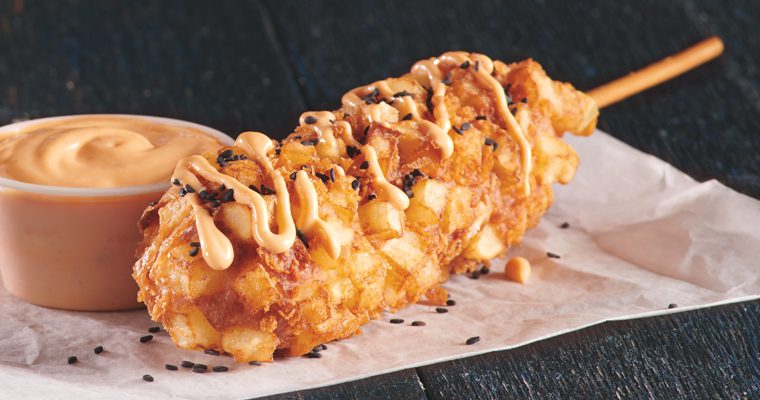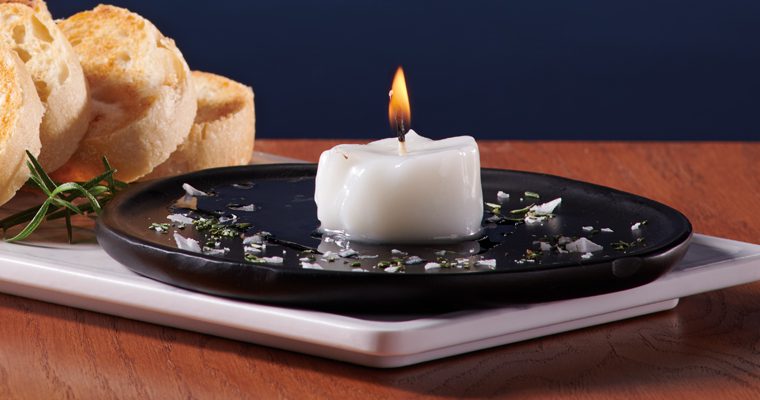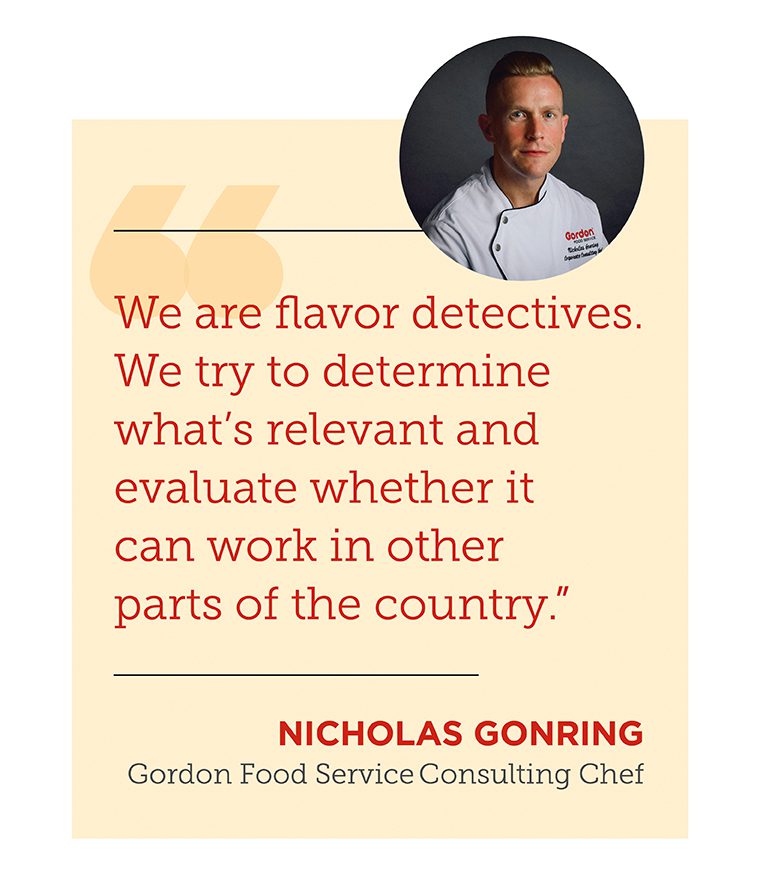Have you tried Korean corn dogs? You will. They are among the restaurant menu innovations uncovered by the Gordon Food Service® culinary team’s recent research tour.
For two decades, Gordon Food Service has traveled to culinary capitals–New York City, Chicago and Los Angeles–in search of the latest food trends. The goal: Conduct street-level research to find recipes ready to energize your operation.
Why do we do it? We understand that business moves at breakneck speed, even on calm days. It’s hard enough keeping pace with trends in your local market, let alone knowing that street vendors in Manhattan are fueling a Korean corn dog craze.
The experts take Manhattan
That’s where the Gordon Food Service culinary team comes in. Led by Corporate Consulting Chef Nicholas Gonring, culinary and industry experts scour publications and websites, looking for new restaurants driving innovation.
“New restaurants have to compete in a very saturated market, so they come up with ideas that are most often different and can catch fire quickly,” Gonring said.
The most recent tour visited NYC. There were 250 target restaurants, a list narrowed to 40 for the tour. The goal was to try 10 dishes at each, or a total of 400 in the innovation hubs of Manhattan and Brooklyn, providing a large sample to document and reimagine as kitchen-tested recipes.
“We are flavor detectives. We try to determine what’s relevant and evaluate whether it can work in other parts of the country,” Gonring said. “We’ve been able to find things that are not on people’s radar, educate them about it, find sources for ingredients and build recipes.”

Three trends to watch
The New York trip reaffirmed the Mediterranean movement is hot. It also uncovered other trends, three of which offer differentiation and are approachable for consumers–Korean corn dogs, jianbing and the return of bread and butter service.
1. Korean corn dogs
These are a cousin to North American cornbread-wrapped hot dogs, but with more flavor complexity and versatility.
It starts with a hot dog, then veers to Korean street food mode. Dunked in a batter of yeast-leavened rice and wheat flours, flavor gets rolled on before it goes in the fryer. Diced potatoes, rice pearls or crushed ramen are options.
“The batter creates a textural difference from the standard corn dog, with a chew akin to a mochi doughnut that makes it unique and interesting,” Gonring said. “And there’s no right or wrong with sauces and garnishes after it comes out of the fryer.”
It’s a great option for a bar and grill, perfect for portability at summertime festivals, concerts, ball games and golf courses.

2. Jianbing
Think of it as a Chinese crepe. This version uses rice and corn flour batter. Once it sets in the pan, an egg is cracked and mixed to cover the crepe. It’s flipped and filled with condiments, barbecued pork, scallions, red cabbage and fried wontons, then folded for service.
“A lot of places serve it to go in little sandwich bags like the kind that hold burgers,” Gonring explained. “It has fast-food portability, but it’s also big for breakfast … it’s seriously addicting.”

3. Return of bread and butter
The trends tour team noticed bread and butter making a comeback, not as a give-away, but as a shared course people are happy to pay for.
One menu served bread with a tallow candle on the plate. Lit at the table, the candle melts into a dipping oil for the bread.
Other examples include making compound butters, using molds to create unique shapes, featuring your own bread program or serving breadsticks or a pan of rolls to tear apart and share.
“It’s comforting, people love it, and you can create an experience that adds incremental sales using products you probably already have in your kitchen,” Gonring said.












